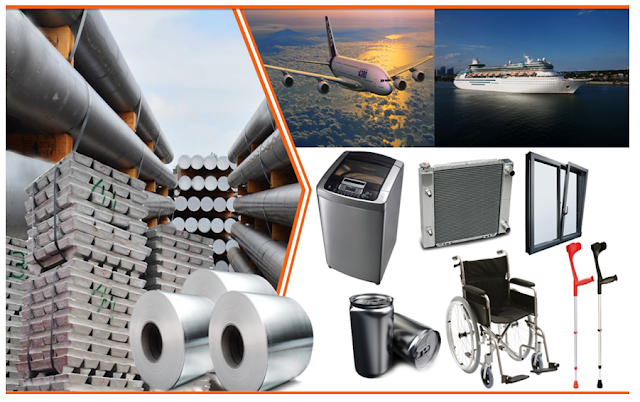ACCELERATING THE DECARBONISATION OF THE ALUMINIUM INDUSTRY
ACCELERATING THE DECARBONISATION OF
THE ALUMINIUM INDUSTRY
The year 2024
marks a significant milestone for the Aluminium
Sector, particularly in light of the
commitments made at COP28. As the
global community pledges to reduce greenhouse gas emissions and combat climate
change, the Aluminium Industry is poised to play a pivotal
role in these efforts.
Decarbonizing the Aluminium Industry, however, is no small feat. It necessitates technological innovations and strategic investments across the entire value chain, from bauxite mining to aluminium production and recycling. Simultaneously, the industry must remain economically viable and competitive on a global scale.
To achieve these objectives promptly, we need to
harness both technological advancements and strategic decision-making. This
includes determining the optimal
approach and location for projects aimed at increasing production
capacities, all while aligning with the proposed decarbonisation goals.
Several technological solutions are currently under
exploration or implementation. These include the use of Renewable Energy Sources, enhancement of energy efficiency,
development of low-carbon processes, and augmentation of recycling rates.
There is a consensus that utilizing Renewable Energy Sources is one of the most efficient and impactful strategies for Decarbonizing the Aluminium Industry across its entire value-adding links. Two particular actions hold significant potential:
- Electrical calcination of alumina, which could substantially reduce the carbon footprint of the Bayer Process.
- Complete replacement of fossil fuels for electricity generation in the Hall-Héroult process.
However, both these solutions currently face a
limitation: only Hydroelectric Energy allows for uninterrupted
24/7/365 production at a cost that renders these inputs economically viable.
Other promising technologies for the Decarbonisation of the Aluminium Industry, currently in the evaluation stages, include the use of Plasma Torches and Green Hydrogen.
Similar to the previous case, both alternatives require a continuous supply of Renewable Energy sources to ensure reasonable costs, specifically
hydroelectricity.
Strategic decisions under consideration include relocating production facilities to regions
with lower carbon intensity, forming partnerships and alliances with other
stakeholders, and engaging with policymakers and regulators.
The ideal scenario is to achieve integrated bauxite-alumina-aluminium
production in regions abundant in bauxite reserves and sufficient Hydroelectric Energy. However, finding geographic regions that also allow for
adequate logistics of inputs and products is challenging.
Venezuela, particularly the Guayana
region, is one such place that meets all
these conditions. With bauxite
reserves exceeding 2,000 million tons and available hydroelectric potential, coupled with the navigability of
the Orinoco River all year round, it presents a viable option.
See:
Venezuela, an ideal site for the integrated production of Bauxite-Alumina-Aluminium
In conclusion, the Aluminium Industry has a tremendous opportunity to contribute to the global decarbonisation
agenda and achieve sustainable, profitable growth in 2024. By adopting
innovative and strategic approaches, and judiciously
selecting regions for the expansion of low carbon footprint alumina and aluminium
production, the industry can surmount the challenges and seize the
opportunities that lie ahead.
Dr. Jesús Imery
PhD Engineering and Materials Science (Imperial College, London)
Email: jesus.imery@alprotes.com
Email: alprotes@alprotes.com
LinkedIn: https://www.linkedin.com/in/dr-jesus-imery











Comentarios
Publicar un comentario